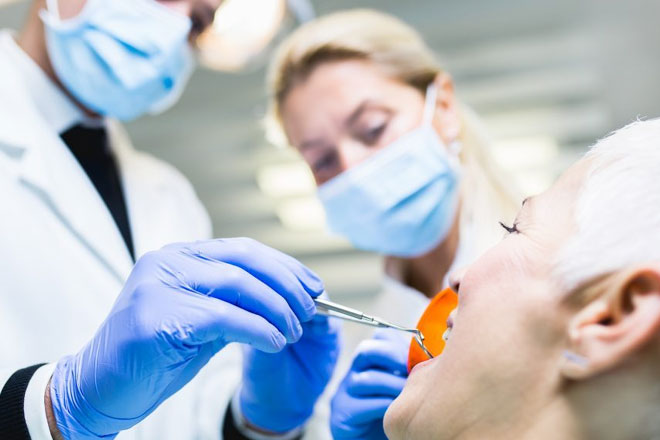


Next, if the dentist deems it necessary, they may apply some medication inside the root canal to clear up an infection.Once the root canal has been cleared out, the dentist will use some water or sodium hypochlorite to flush away the remaining debris.The dentist will scrape and scrub the sides of the root canal to remove all of the debris. This entire procedure is done using root canal files of various measurements. They’ll remove all of the decayed tissues, nerved, and debris from the pulp chamber.The dentist will drill an access hole into the tooth.Before the dentist starts working on your teeth, they’ll place a rubber dam around your teeth to prevent saliva from interfering.This may not be necessary because the nerve may already be dead, but it’s a precautionary measure. The dentist will numb the region around the tooth with local anesthesia, so you don’t feel anything.The dentist will take an X-ray to examine the root canal and determine if the infection has spread into the surrounding tissues.The following is an overview of all the steps involved in the root canal procedure: Your dentist will also discuss the treatment with you, so you know what to expect exactly. Your dentist will examine your tooth and determine who should proceed with the treatment. Whether you should consult a regular dentist or an endodontist depends on the complexity of your root canal treatment. An endodontist is someone who specializes in the diagnosis and treatment of issues pertaining to the pulp chamber of the tooth. The root canal procedure requires one or two visits to the dentist or endodontist’s office. Dental abscesses are pus-filled pockets at the end of the roots of the tooth - if left untreated, they can lead to bone loss around the tooth, swelling, and drainage problems at the end of the tooth’s root. If you don’t do so, the bacteria will continue multiplying within the pulp chamber, which can lead to an infection or abscess. As such, the removal of the nerve won’t affect your tooth on a day-to-day basis.ĭuring the root canal procedure, the infected nerve tissues and pulp have to be removed. However, the nerve isn’t vital to the tooth’s functioning or health - its only purpose is to offer hot and cold sensations. The root canal also holds the pulp chamber and the tooth’s nerve. The “root canal” is the cavity at the center of your tooth - the innermost layer of the tooth after the enamel and dentin layers. To truly understand the root canal procedure, you need to also understand the anatomy of the tooth.

If you don’t treat the infected root canal, it will eventually get infected and may lead to a dangerous abscess. Following that, the pulp chamber has to be cleaned and sealed. What is a Root Canal? Why do I Need a Root Canal?ĭuring the root canal procedure, the nerve and pulp have to be removed from within your tooth.


 0 kommentar(er)
0 kommentar(er)
